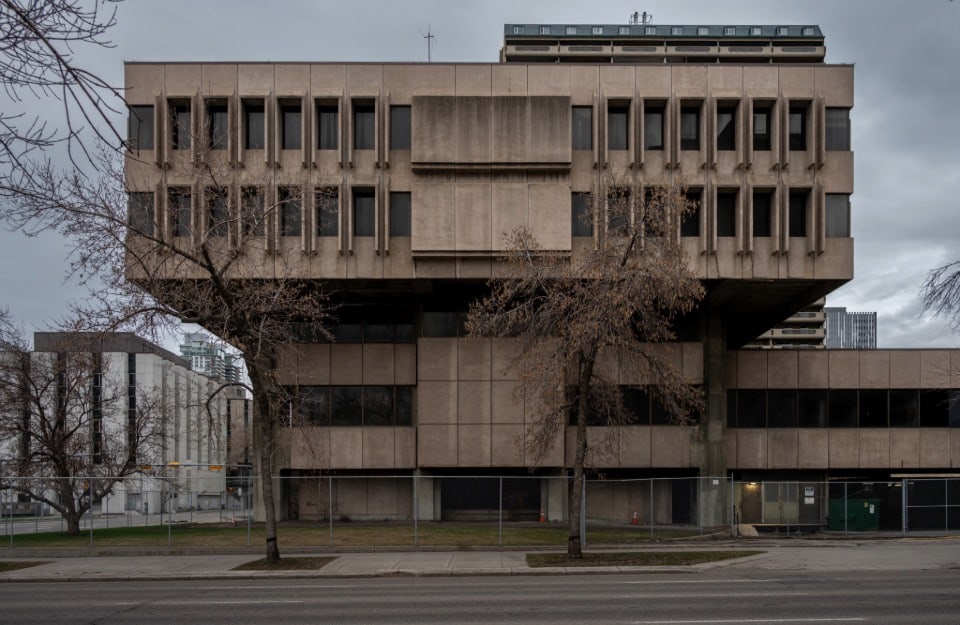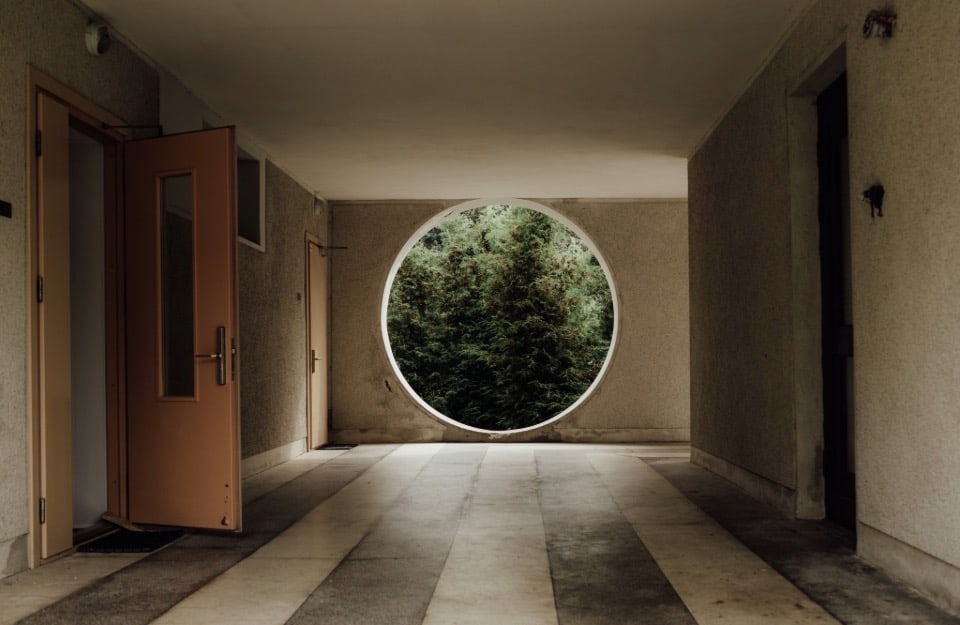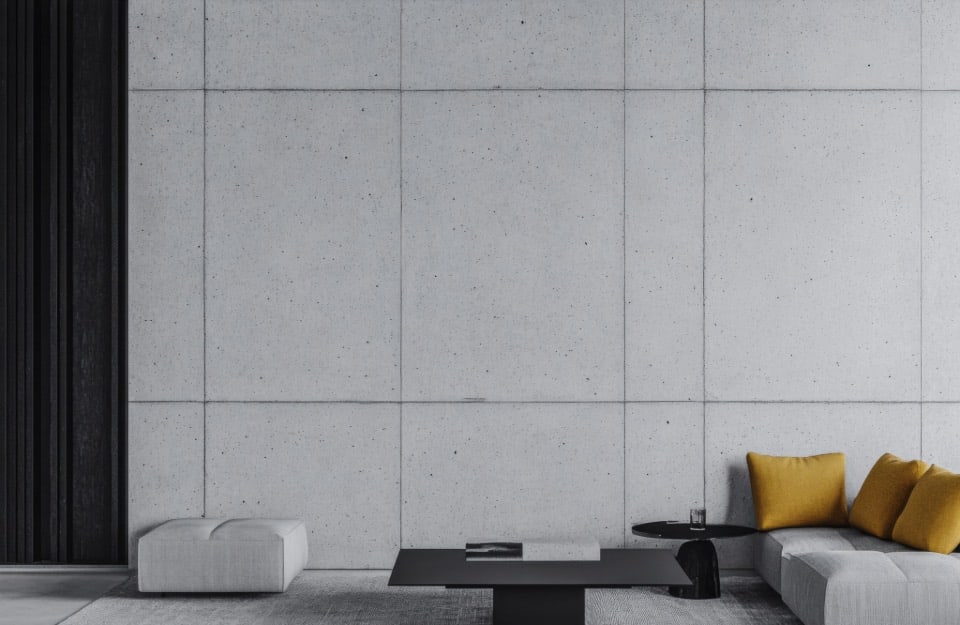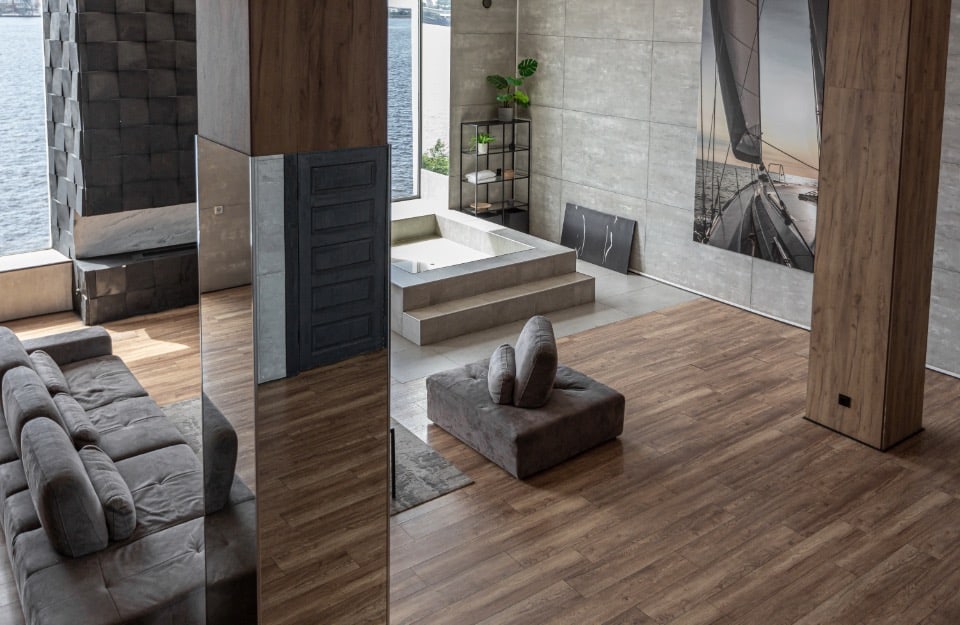In recent years, the Brutalist style has seen an unpredictable comeback in interior design. This is thanks to a profound reevaluation of Brutalist architecture, which has also taken hold on social media. Platforms such as Instagram and Pinterest have played a crucial role in rediscovering the sculptural and monumental beauty of Brutalist buildings: once despised structures have become true style icons. This renewed interest has also influenced interior design, with many contemporary designers looking to Brutalism to create spaces that combine minimalism and an emphasis on the almost primitive beauty of bare material.
What is brutalism?

The term Brutalism was born around the 1950s, in the United Kingdom. It derives from the French béton brut, “exposed concrete”, or the use of concrete not only at a structural level but also (non)decorative, leaving it bare, avoiding covering it with plaster or cladding. The “noble father” of this movement was the great French architect and designer Le Corbusier, who was the first to explore the possibilities of reinforced concrete in the residential sector.
Brutalist architecture developed in the context of post-war reconstruction and the parallel demographic boom that occurred, which led to a housing crisis. It was therefore essential to build affordable buildings that were also long-lasting and practical. An architectural form was sought that was useful and accessible to all, free of those unnecessary decorative elements that could slow down or complicate construction. No frills, just functionality. In its original intentions, Brutalist architecture was also crossed by a profoundly utopian vision. Its promoters, especially in the post-war period, imagined an architecture capable of improving people’s lives through solid, functional and democratic buildings. The large reinforced concrete structures, with large common areas, were supposed to encourage socialization and create cohesive communities, offering housing solutions for the masses. This utopian push, however, in many cases clashed with reality. Over time, many of the brutalist urban areas turned into degraded spaces, perceived as alienating, cold, difficult to maintain. The lack of attention to aesthetic details, combined with management and maintenance problems, transformed many of these places into symbols of abandonment and poverty.
A polarizing style

In architecture, you either love or hate Brutalism. It rarely leaves anyone indifferent. In interior design, this “polarization” is a little more toned down, and this style continues to conquer those seeking a strong, authentic and uncompromising aesthetic.
It is certainly an aesthetic that is not for everyone, but for those who can understand its depth, Brutalism represents a way of experiencing space with a clarity and strength that few other trends can convey.
Brutalist style in interior design

In interior design, Brutalism follows an aesthetic that marries structural simplicity with a certain edginess. Rooms are characterized by open spaces, sharp lines, and bare surfaces, where materials are celebrated in their purest form.
Raw and authentic materials
Cement is definitely the undisputed protagonist of this style. It is applied not only in the structures, but also in the furnishing elements. Walls left untreated, concrete tables and coffee tables and unfinished floors create an essential, unadorned, yet fascinating ambience.
Steel, glass and wood are also common materials, often used without attempting to conceal their true nature.
The beauty of brutalism lies precisely in showing the honesty of the materials, which become the protagonists of the environment.
A minimalist color palette

Just as materials are presented in their bare forms and surfaces, so are colors reduced to the bone.
We find of course the range of concrete grays, and then anthracite, taupe and “dirty” whites, both cold and warm.
All enriched by accents in natural wood, glass and metal. To dilute the monochromaticism and give vitality or warmth to the spaces, other colors can be employed:
- Warm neutrals such as terracotta and beige;
- dusty greens, light and dark, from sage to olive green;
- deep but unsaturated blues.
To further enliven the spaces, touches of brighter colors are not “forbidden” (but without overdoing it!).
Furniture and (few) accessories

Following this anti-decorative spirit, the elements used in the furniture will also be only the bare essentials, with few concessions to the superfluous.
Simple shapes, geometric volumes and pieces with a sculptural presence are favoured. Sofas and armchairs tend to have rigid, square contours, while tables and chairs are often made of solid, linear materials.
Furniture is made of dark wood, brushed steel or even concrete.
Everything (or almost everything) has to be functional, but some liberties can be allowed, always with a view to making the room more human and cosy, for example wicker or rattan seating. As for accessories, they will be limited in number, but can still be an opportunity to play with the contrast between hard and soft materials. A further tip for bringing the space to life: the use of plants.


